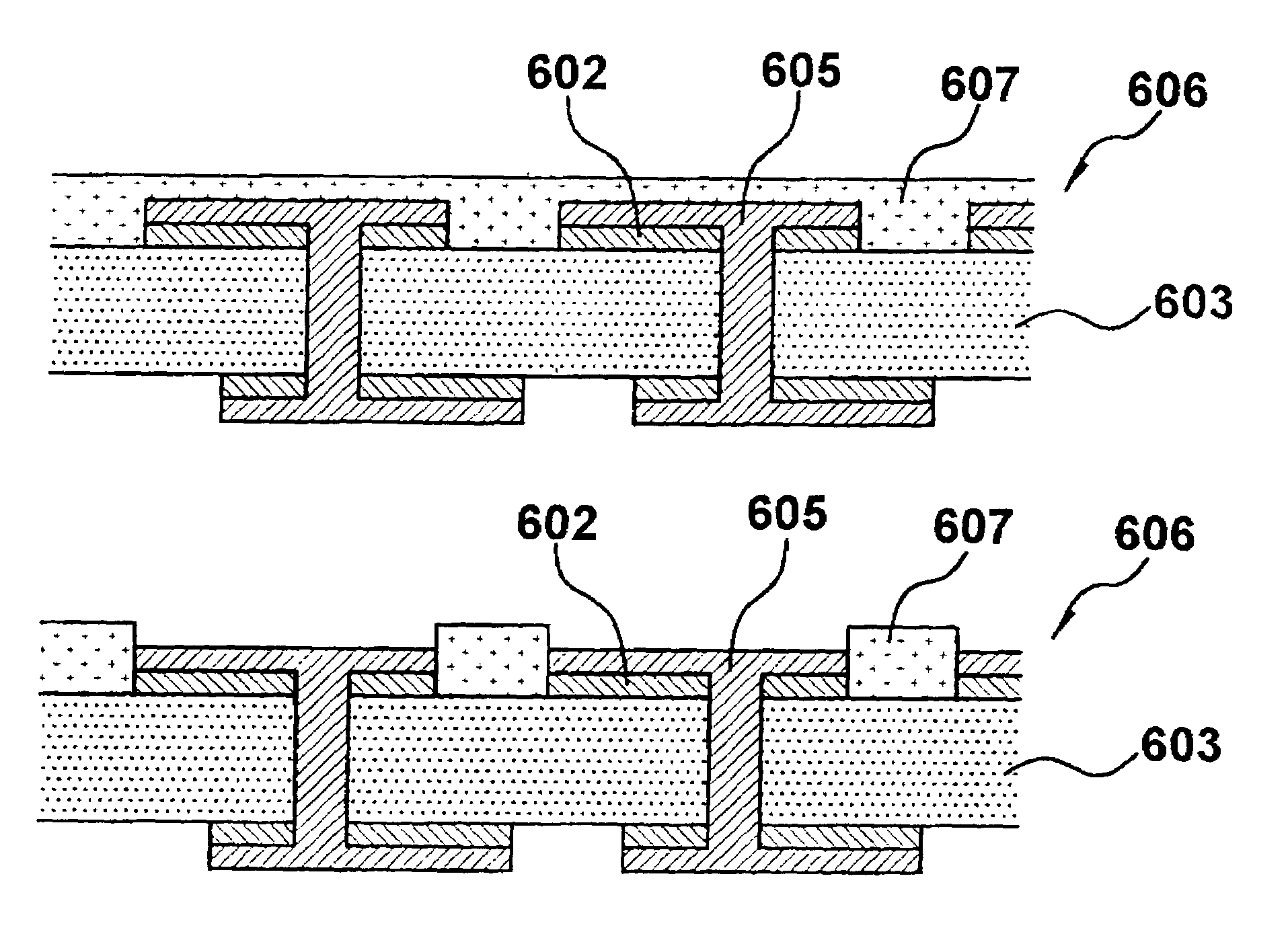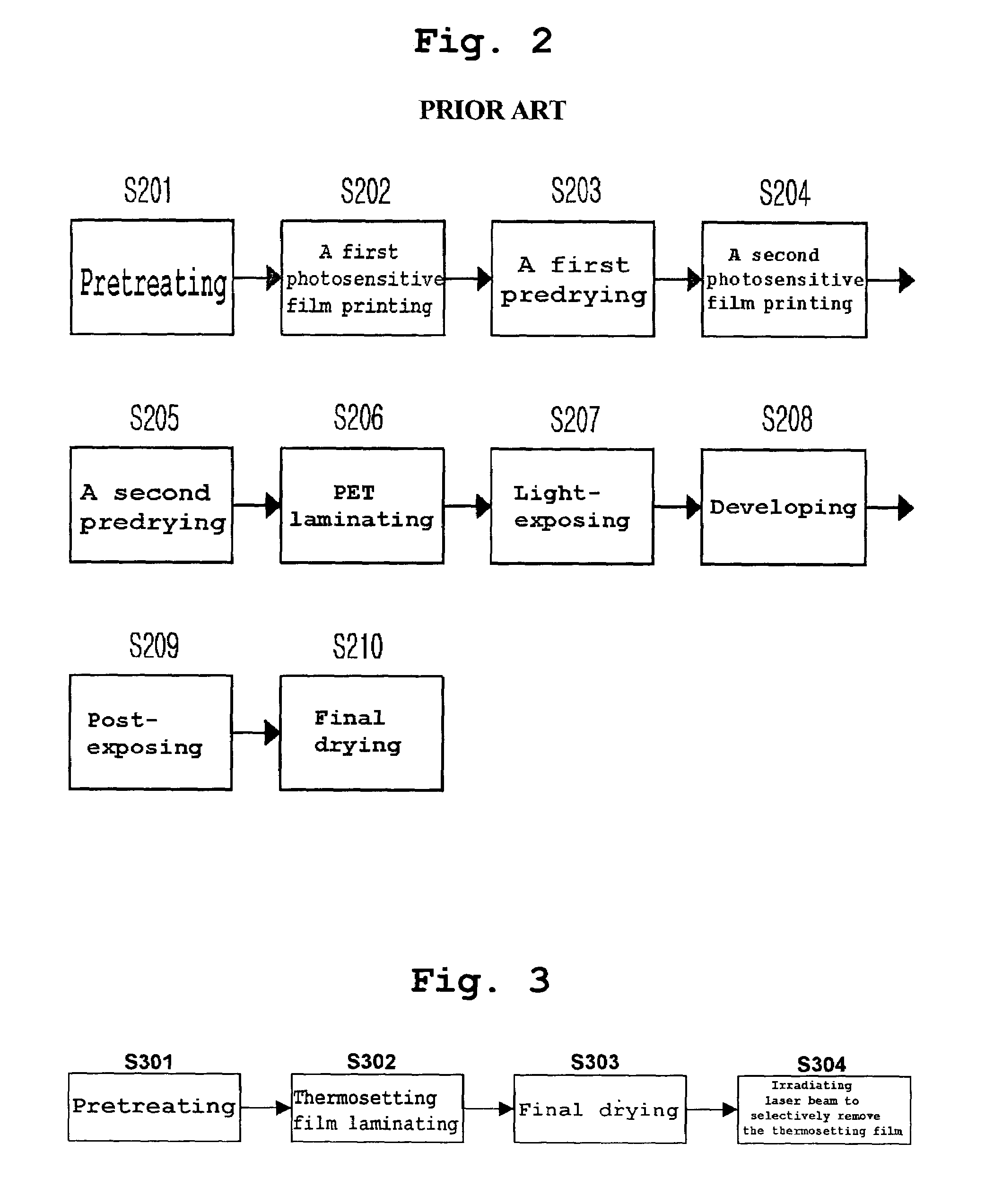Method of forming solder resist pattern
- Summary
- Abstract
- Description
- Claims
- Application Information
AI Technical Summary
Benefits of technology
Problems solved by technology
Method used
Image
Examples
Embodiment Construction
[0057]Hereinafter, the present invention will be explained in more detail with reference to the accompanying drawings.
[0058]A flowchart showing a method for forming a solder resist pattern of the present invention is shown in FIG. 3.
[0059]In step S301, a scrubbing process is carried out to improve the adhesion between an insulating thermosetting solder resist film and a substrate.
[0060]When fingerprints, oil, dust, etc., are stuck on the substrate, a solder resist ink is not closely adhered to the substrate, causing a problem of low adhesion. In addition, the incomplete adhesion causes non-uniform plating thickness during plating process, which leads to cutting of wirings or short-circuiting between adjacent wirings. Accordingly, it is necessary to clean the surface of the substrate in order to prevent the defects. The cleaning operation is called a ‘scrubbing’. The reason for the scrubbing is to roughen the surface of the substrate and to facilitate the lamination on the substrate....
PUM
 Login to View More
Login to View More Abstract
Description
Claims
Application Information
 Login to View More
Login to View More - R&D
- Intellectual Property
- Life Sciences
- Materials
- Tech Scout
- Unparalleled Data Quality
- Higher Quality Content
- 60% Fewer Hallucinations
Browse by: Latest US Patents, China's latest patents, Technical Efficacy Thesaurus, Application Domain, Technology Topic, Popular Technical Reports.
© 2025 PatSnap. All rights reserved.Legal|Privacy policy|Modern Slavery Act Transparency Statement|Sitemap|About US| Contact US: help@patsnap.com



